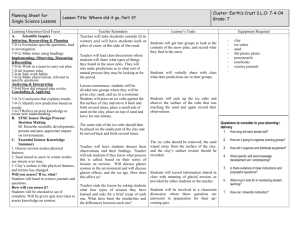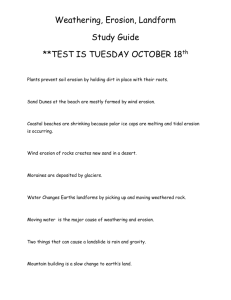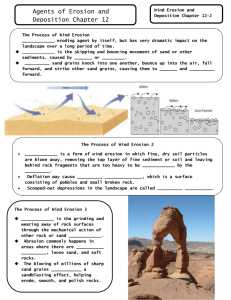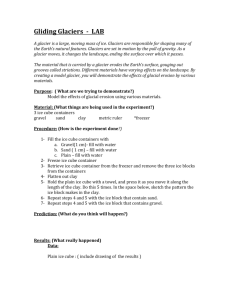Chemical Erosion (As a class)
advertisement
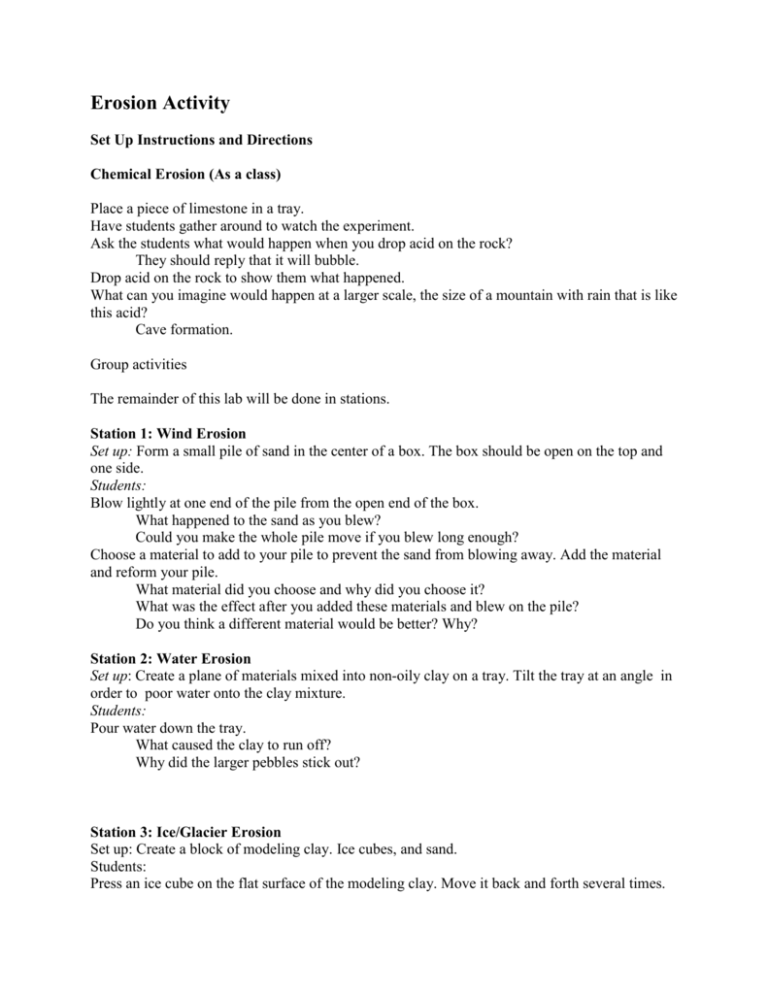
Erosion Activity Set Up Instructions and Directions Chemical Erosion (As a class) Place a piece of limestone in a tray. Have students gather around to watch the experiment. Ask the students what would happen when you drop acid on the rock? They should reply that it will bubble. Drop acid on the rock to show them what happened. What can you imagine would happen at a larger scale, the size of a mountain with rain that is like this acid? Cave formation. Group activities The remainder of this lab will be done in stations. Station 1: Wind Erosion Set up: Form a small pile of sand in the center of a box. The box should be open on the top and one side. Students: Blow lightly at one end of the pile from the open end of the box. What happened to the sand as you blew? Could you make the whole pile move if you blew long enough? Choose a material to add to your pile to prevent the sand from blowing away. Add the material and reform your pile. What material did you choose and why did you choose it? What was the effect after you added these materials and blew on the pile? Do you think a different material would be better? Why? Station 2: Water Erosion Set up: Create a plane of materials mixed into non-oily clay on a tray. Tilt the tray at an angle in order to poor water onto the clay mixture. Students: Pour water down the tray. What caused the clay to run off? Why did the larger pebbles stick out? Station 3: Ice/Glacier Erosion Set up: Create a block of modeling clay. Ice cubes, and sand. Students: Press an ice cube on the flat surface of the modeling clay. Move it back and forth several times. What happened to the clay? Place a small pile of sand on the clay. Now place the ice cube on the sand and leave it there for one minute. Now pick up the ice cube and make observations. What happened to the ice cube after it sat on the sand? Place the ice cube back on the clay with sand. Press and move it back and forth as you did the first time. Remove the ice cube and gently brush the sand off the clay. What did the surface of the clay look like after you rubbed the cube against it the second time? To review the lab: Define the different types of erosion with example pictures. Powerpoint Name_____________________ Period________ Erosion Activity Objective: To observe and identify different types of erosion. Station 1: Chemical Erosion Set up: Hydrochloric Acid on Limestone and Vinegar on Chalk Students: Make observations about what does acid rain or natural chemicals do to rocks. Station 2: Wind Erosion Set up: Form a small pile of sand in the center of the box. The box should be open on the top and one side. Students: 1) Blow LIGHTLY at one end of the pile from the open end of the box. What happened to the sand as you blew? Could you make the whole pile move if you blew long enough? 2) Choose a material to add to your pile to prevent the sand from blowing away. Add the material and reform your pile. What material did you choose and why did you choose it? What was the effect after you added these materials and blew on the pile? Do you think a different material would be better? Why? Station 3 A: Water Erosion Set up: Stream table Students: Make observations about what the water is doing to the landscape. Why did the larger pebbles/rocks/other objects stick out? Station 3 B: Ice/Glacier Erosion Set up: Stream table and a block of ice. Students: Make observations about what the ice is doing to the landscape.
